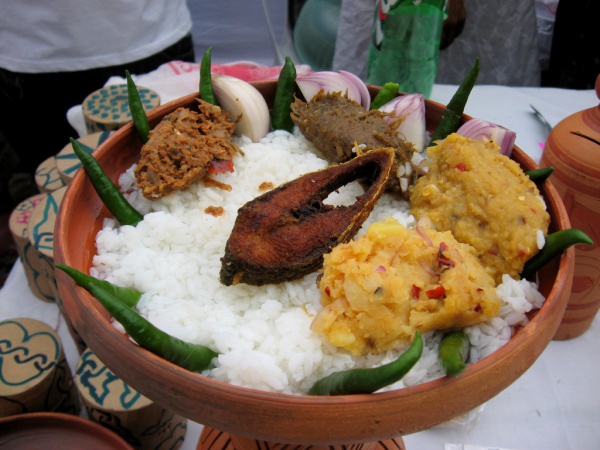Facts About Panta bhat
Poitabhat, also known as panta bhat, is a cherished rice dish in Bangladesh and various eastern Indian states. This distinctive meal is prepared by soaking cooked rice in water overnight, then serving it the next morning with a sprinkle of salt, chopped onions, and a touch of chili. It has a rich history dating back to the 17th century and is believed to have been favored by the proto-Australoid people due to their cooking habits. Over time, the types of rice used for panta bhat have evolved, reflecting regional preferences and availability.
To prepare panta bhat, you start by soaking cooked rice and allowing it to cool for several hours after straining out the starch. Once it has cooled, you add water and let it sit overnight. In the morning, it is ready to be garnished with salt, lime, chili, and onions, creating a refreshing and tangy dish. Different regions have their own variations, such as Pakhala in Bihar and Orissa. Panta bhat is particularly beneficial during febrile conditions and is packed with micronutrients thanks to the fermentation process.
This dish is especially popular in rural areas and is commonly enjoyed as a breakfast meal. It also holds significant cultural importance during Pahela Baishakh celebrations, which mark the Bengali New Year. During these festivities, panta bhat is typically served with a variety of side dishes such as fried fish, vegetable curry, and milk curd. In Hindu Bengali traditions, it is often featured during festivals like Durga Puja.
Nutritionally, panta bhat offers several health benefits. The fermentation process enhances the bioavailability of minerals such as iron, potassium, sodium, and calcium. However, it is important to consume the dish promptly after preparation to avoid the risk of contamination. Despite its nutritional value, panta bhat can be susceptible to contamination by fecal coliforms if not handled properly.

 India
India